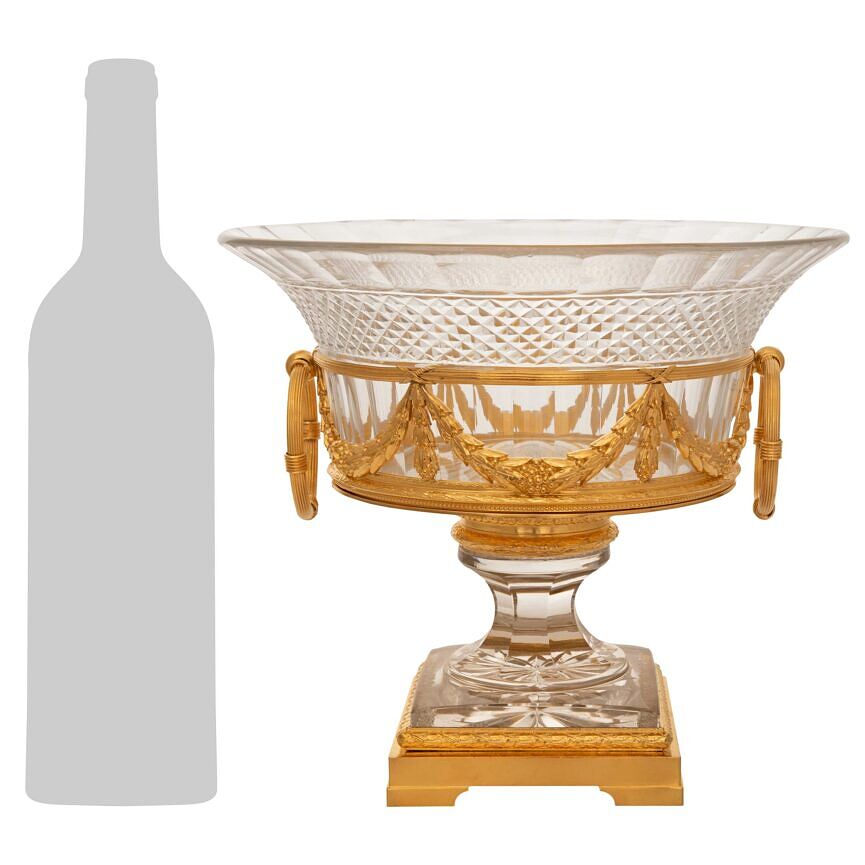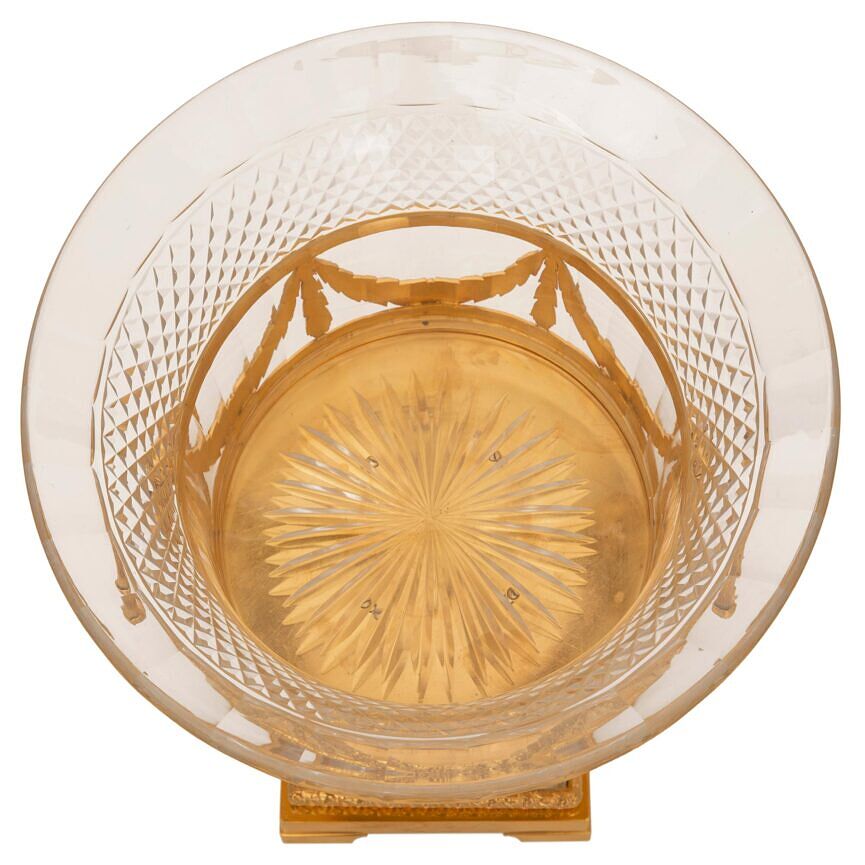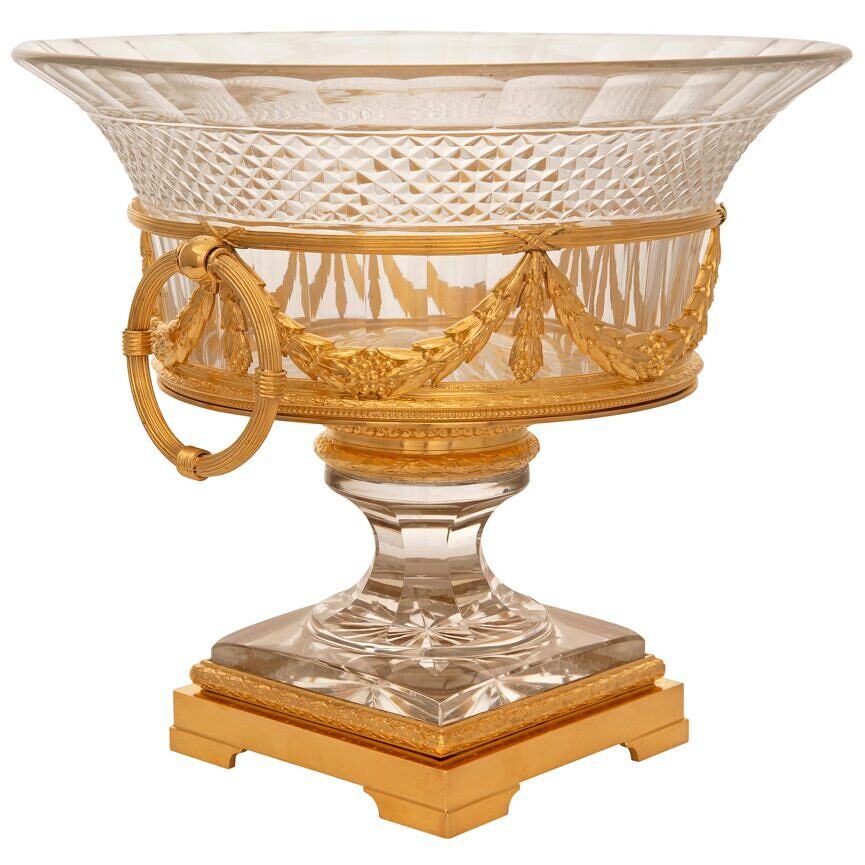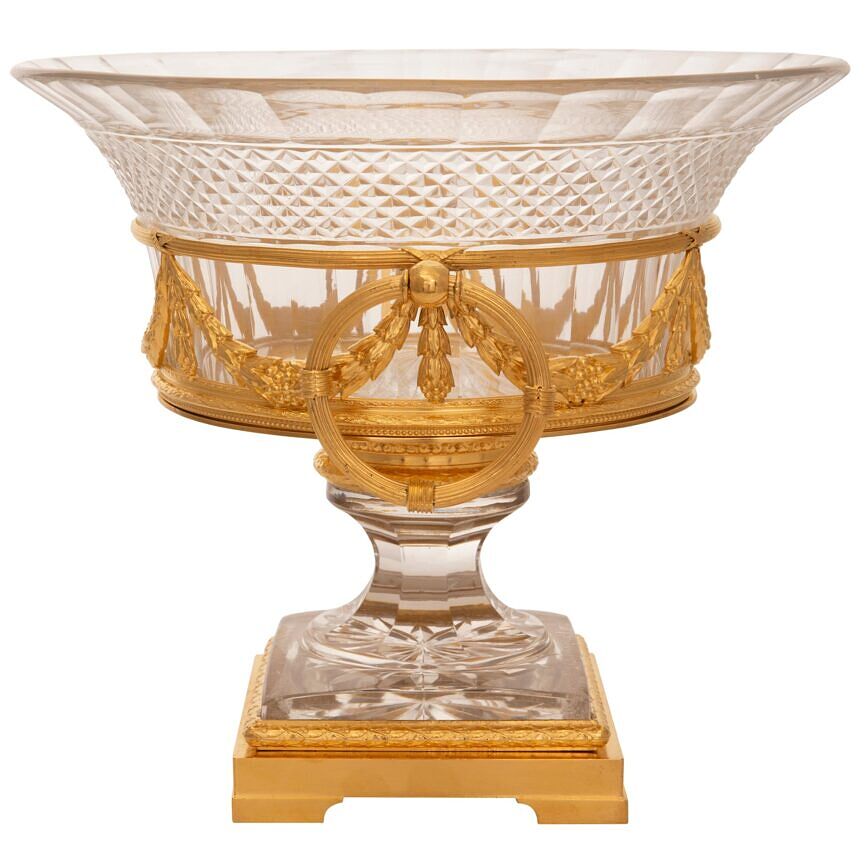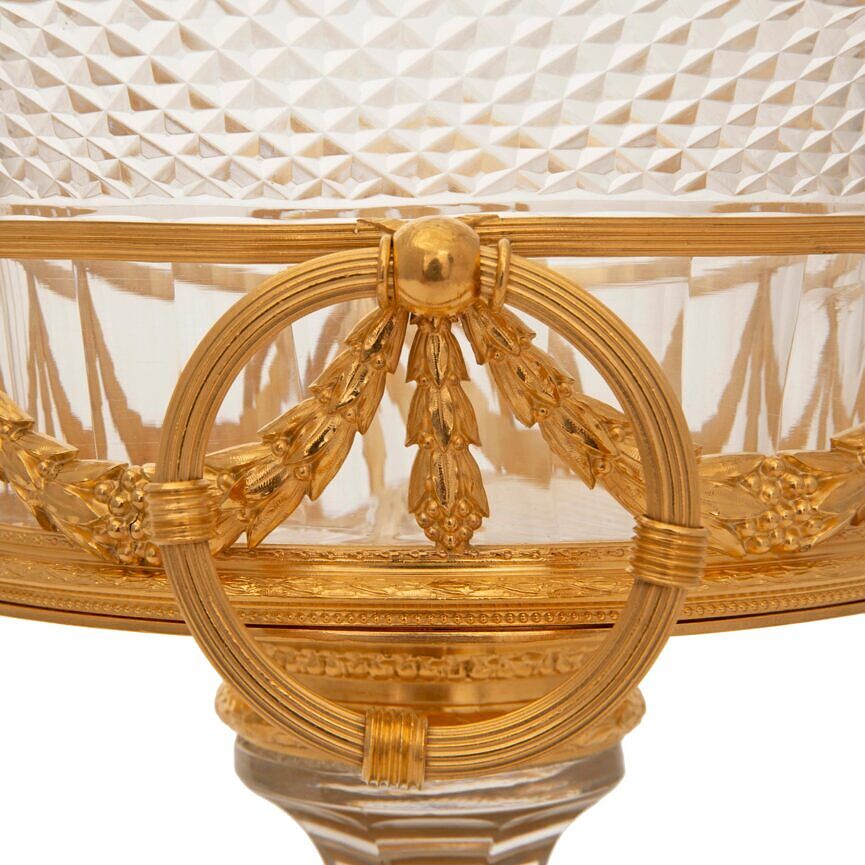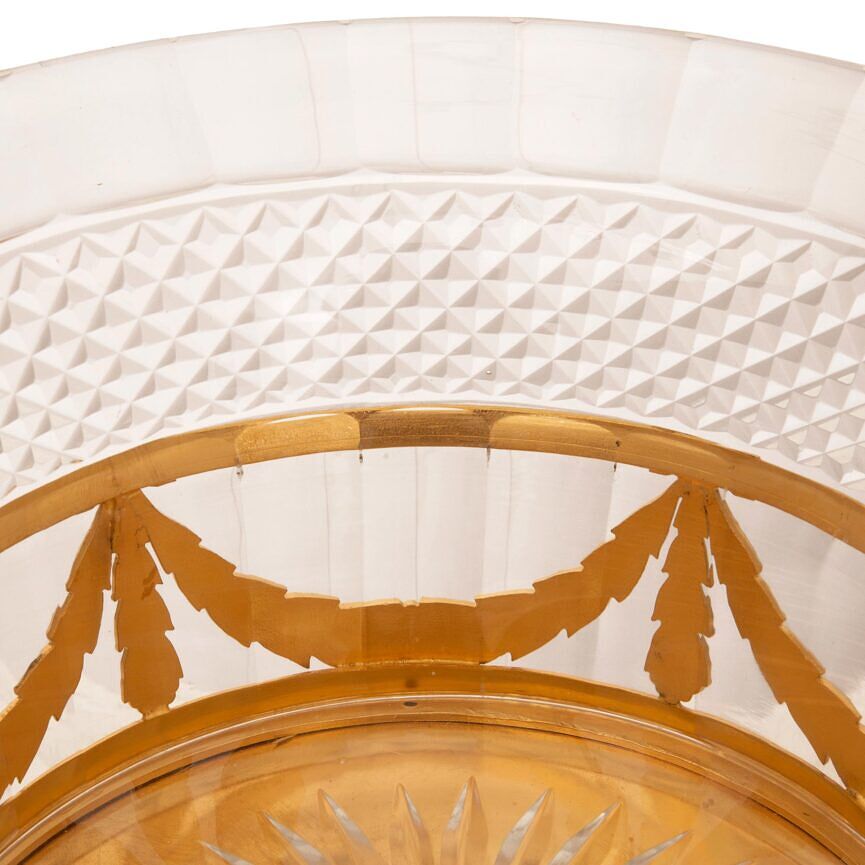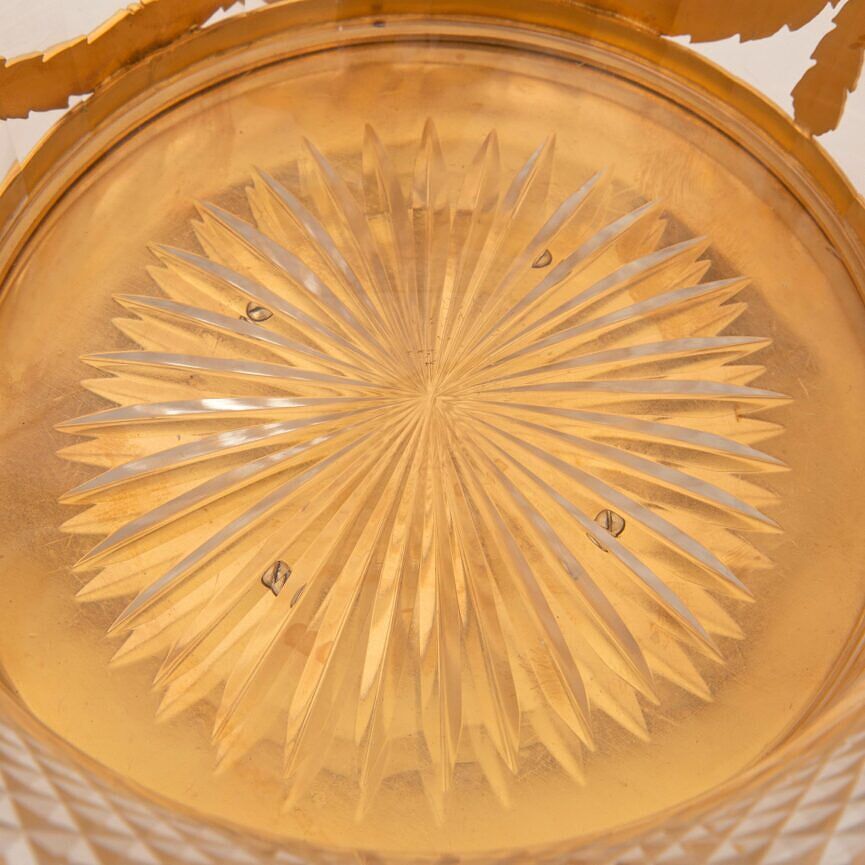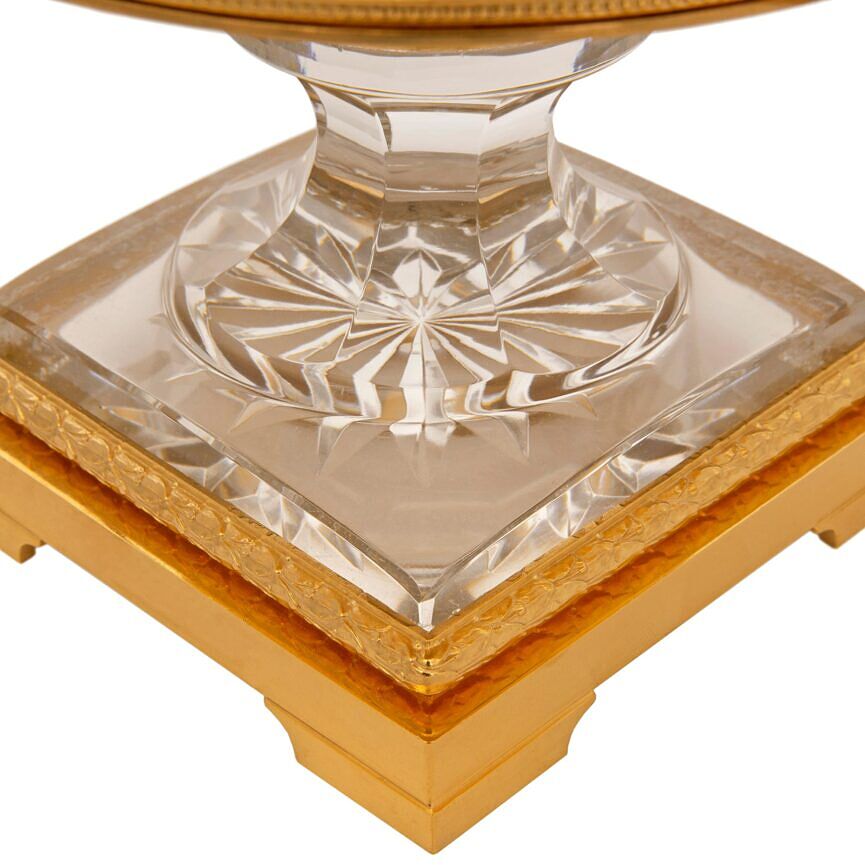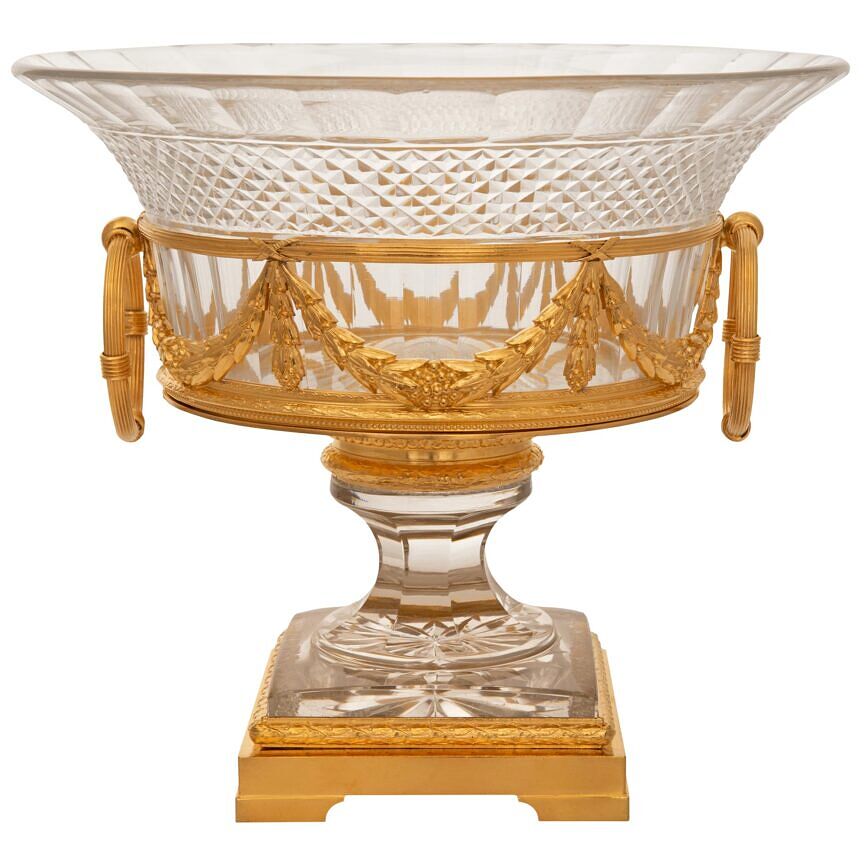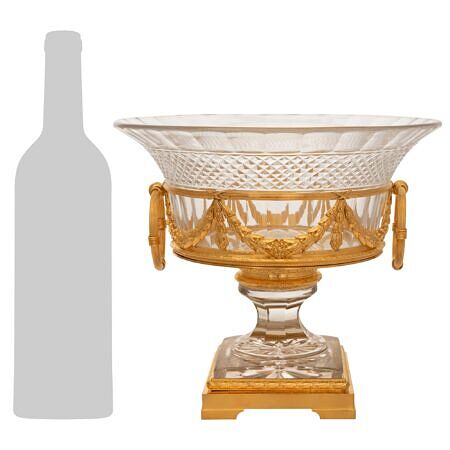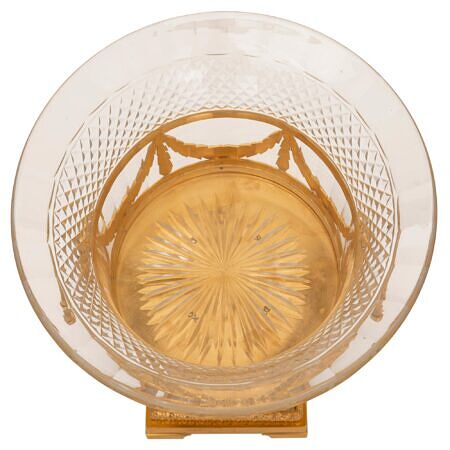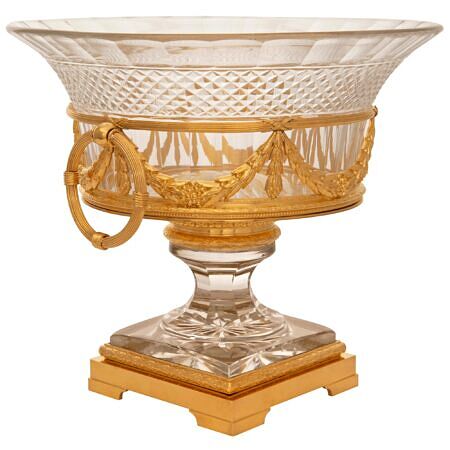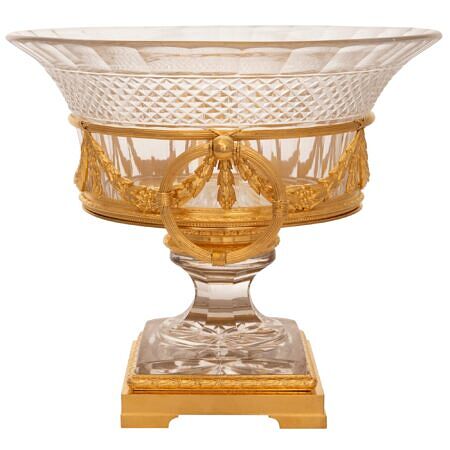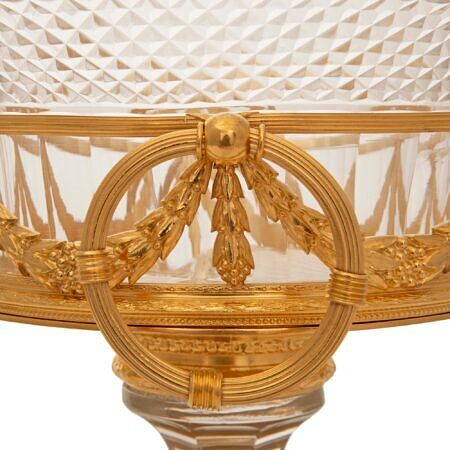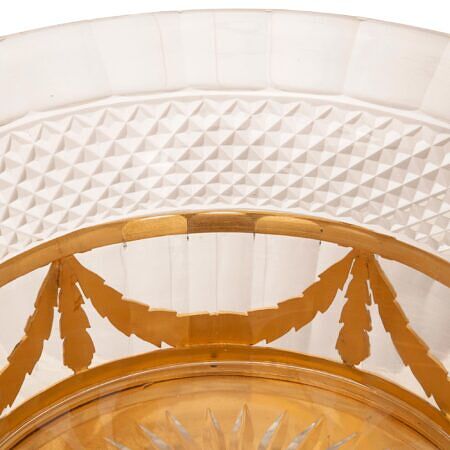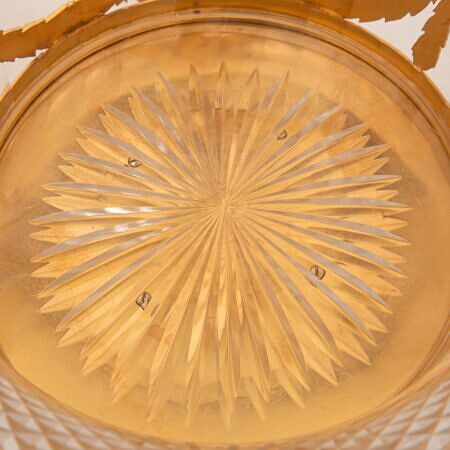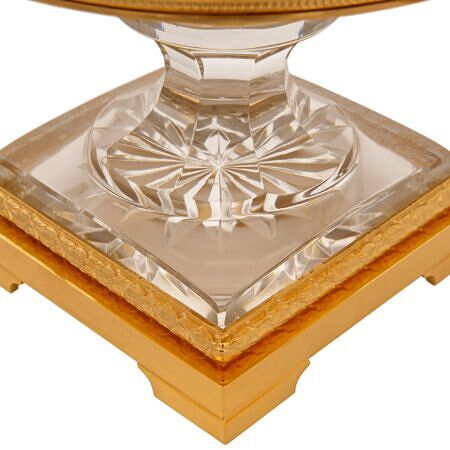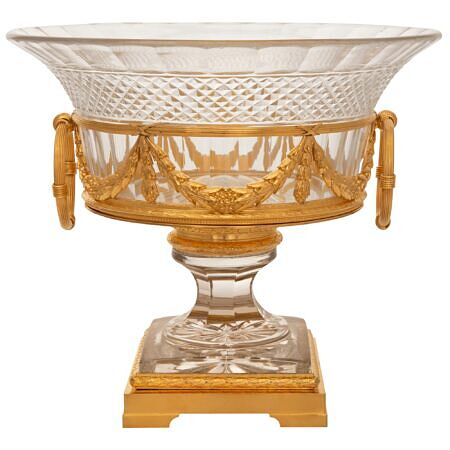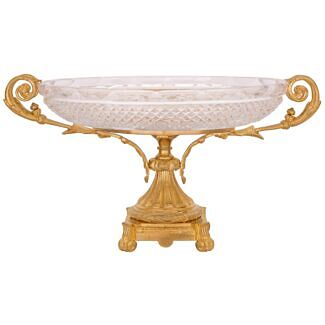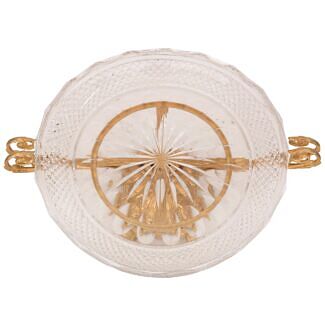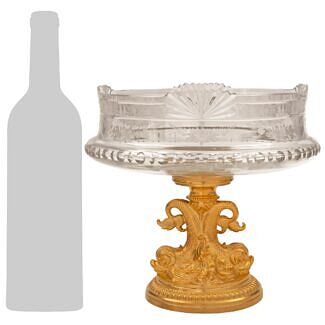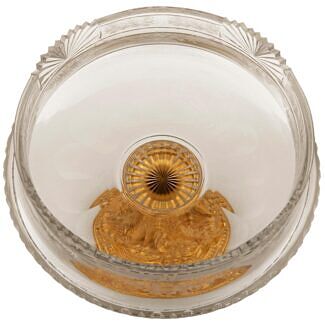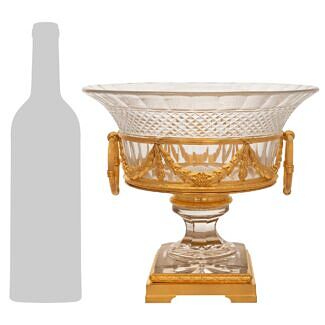A French 19th century Louis XVI st. Belle Époque period Baccarat crystal and ormolu centerpiece
Sorry, This item has sold
A most elegant French 19th century Louis XVI st. Belle Époque period Baccarat crystal and ormolu centerpiece. The centerpiece is raised by a square base with fine ormolu feet with a wrap around berried laurel band. Above the beautiful socle... — Read More
A most elegant French 19th century Louis XVI st. Belle Époque period Baccarat crystal and ormolu centerpiece. The centerpiece is raised by a square base with fine ormolu feet with a wrap around berried laurel band. Above the beautiful socle shaped pedestal support is the superb cut crystal bowl displaying striking diamond shaped cut designs and encased within exceptional tied wrap around fluted bands, stunning richly chased swaging berried laurel garlands, and elegant handles at each side. — Read Less
- Item # 13156
-
H: 9.5 in L: 10.5 in D: 10.5 in
H: 24 cm L: 27 cm D: 27 cm
- France
- 19th Century
- Baccarat Crystal, Ormolu
- Belle Époque Read More, Louis XVI st. Read More
- Baccarat Read More
In 1764 King Louis XV of France gave permission to found a glassworks in the town of Baccarat. Production consisted of window panes, mirrors and stemware until 1816 when the first crystal oven went into operation. By that time over 3000 workers were employed at the site.
Baccarat was famous and requested by many royal houses and received its first royal commission in 1823. This began a lengthy line of commissions for royalty and heads of state throughout the world. In 1855 Baccarat won its first gold medal at the Worlds Fair in Paris after which they began to mark their creations towards the end of the 19th century.
Related products
-
# 11893 - H: 7" L: 14" D: 11"
-
# 12957 - H: 8" L: 9" D: 9"


